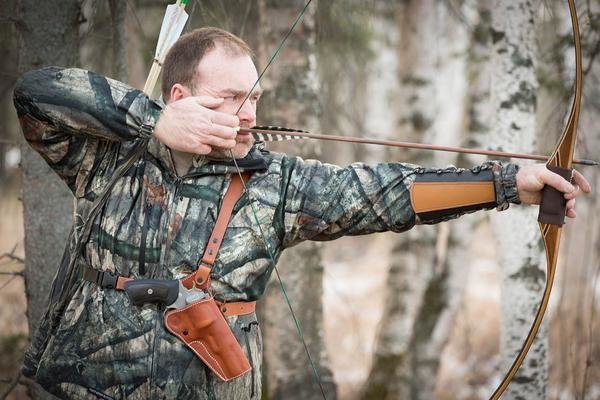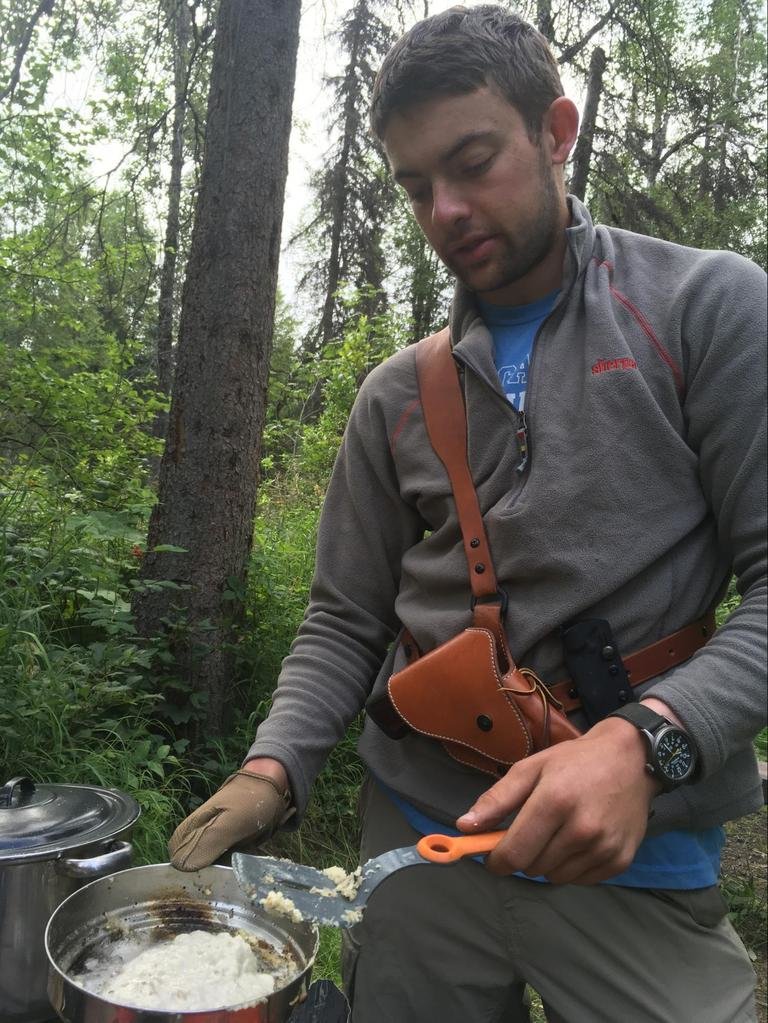This Chest Holster is the Perfect Backcountry Rig for your Sidearm

The bear stood about 20 feet to our left on the hillside. In that instant the world around us became still, the river didn’t seem so loud, and, for the first time in my life, I drew my sidearm from its holster. We stood there — me, my father, and a lone cinnamon black bear — for only a few seconds. The bear huffed at us, seemingly unphased by our presence on the trail, and then it was over; the bear walked away, leaving us alone and a bit confused on the trail. We were not far from the Eagle River Nature Center in south-central Alaska, and when the bear was finally gone, I returned my pistol to my Diamond D Chest Holster.
I’ve owned and used three of these holsters over the years, one for each sidearm I’ve carried, and now these holsters are in my closet, sweat-stained and scratched but in perfect functional condition. Made of thick leather, these holsters are meant to withstand a serious beating out in the field. I have never seen one fail in any way, and to be totally honest, I can’t think of any real improvements on the design. The holster body fits snugly, even after hard use softens the leather. The holsters made for semi-automatic handguns come with a small snap to secure the firearm, while revolver holsters have a small leather thong to fit over the hammer.

Diamond D Custom Leather, based in Wasilla, Alaska, makes these holsters by hand, and of the three I’ve owned, I’ve never found a single defect in manufacturing — not a single bad stitch or badly cut edge on the leather. This quality comes at a cost though. The chest holster retails for $175 or more, depending on options like a magazine or speed loader pouch.
And then there’s comfort. I have used this holster for long backpacking expeditions into the wilderness, and after a few miles on the first day, I no longer feel the weight of the holster. The shoulder strap is wide and distributes weight well. Also, I make sure to properly adjust the holster to my frame before setting out, making sure the holster is snug but not too tight. The best holster is the one you don’t notice, and this holster passes that test in spades.

When drawing, the holster is smooth and graceful. The holster body covers the entire trigger guard for safety, and the holster is one of the safest I’ve ever used. Just be careful not to muzzle yourself as you reholster, but that’s a concern with most every holster on the market. With practice, I found that I can draw and fire faster from this holster than from anything else I’ve used — though I’ve admittedly never tried out a 3-Gun race holster.
Diamond D chest holsters withstand abuse, comfortably and safely secure a sidearm, and stand out as one of my favorite pieces of gear while backpacking. This is one piece of kit that I highly recommend if you plan to venture into the wilder places … the places that put you a little lower on the food chain.


Garland Kennedy is a contributing writer for Coffee or Die. As an avid backpacker and outdoorsman, he has explored wide-open spaces all over North America — from the forests of North Carolina (he’s a graduate of UNC-Chapel Hill with a degree in medieval history) to the mountains of Alaska. His previous bylines include gear reviews on RockChuckSummit.com.
BRCC and Bad Moon Print Press team up for an exclusive, limited-edition T-shirt design!
BRCC partners with Team Room Design for an exclusive T-shirt release!
Thirty Seconds Out has partnered with BRCC for an exclusive shirt design invoking the God of Winter.
Lucas O'Hara of Grizzly Forge has teamed up with BRCC for a badass, exclusive Shirt Club T-shirt design featuring his most popular knife and tiomahawk.
Coffee or Die sits down with one of the graphic designers behind Black Rifle Coffee's signature look and vibe.
Biden will award the Medal of Honor to a Vietnam War Army helicopter pilot who risked his life to save a reconnaissance team from almost certain death.
Ever wonder how much Jack Mandaville would f*ck sh*t up if he went back in time? The American Revolution didn't even see him coming.
A nearly 200-year-old West Point time capsule that at first appeared to yield little more than dust contains hidden treasure, the US Military Academy said.












